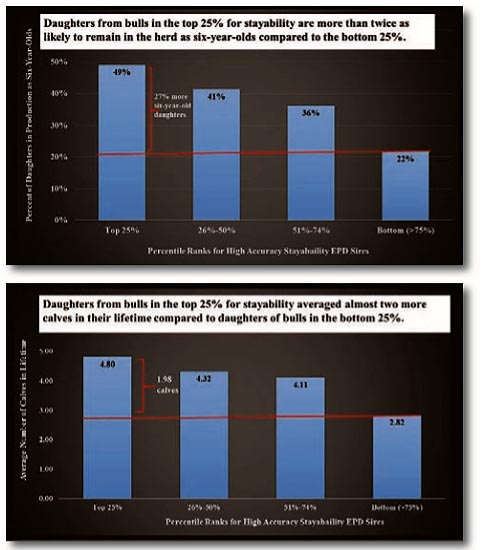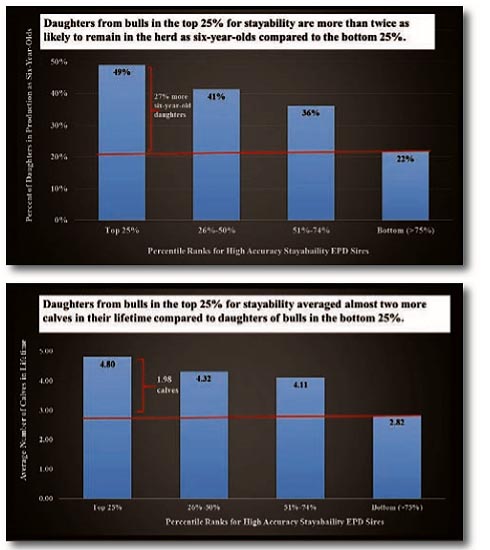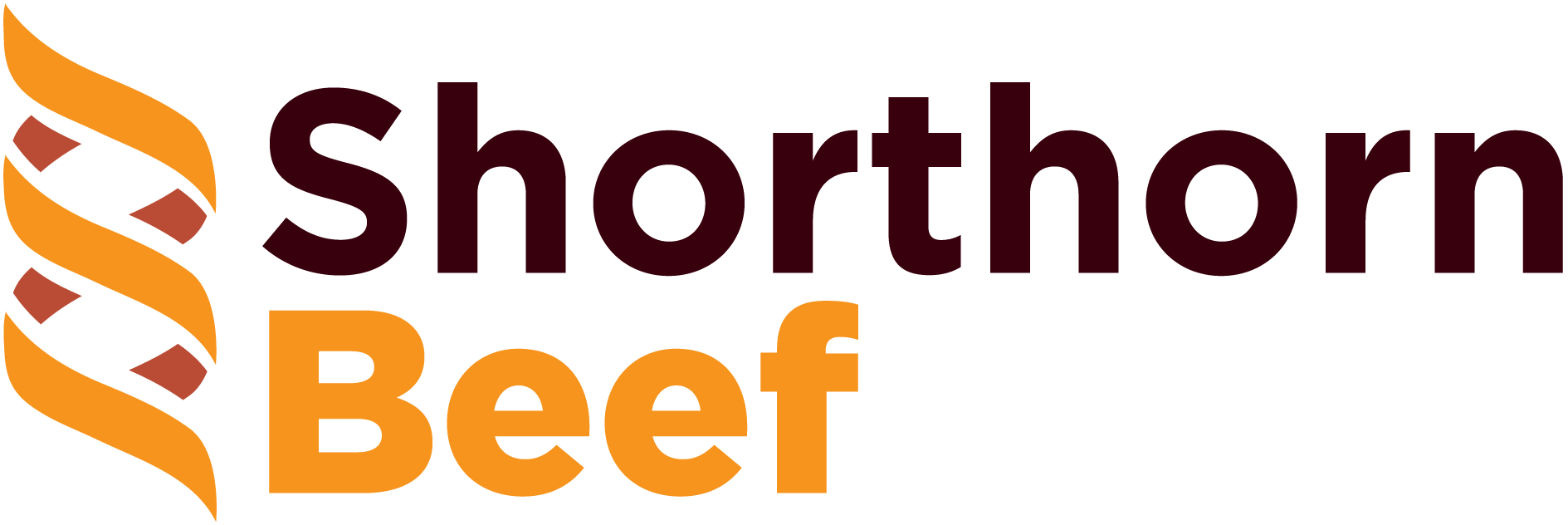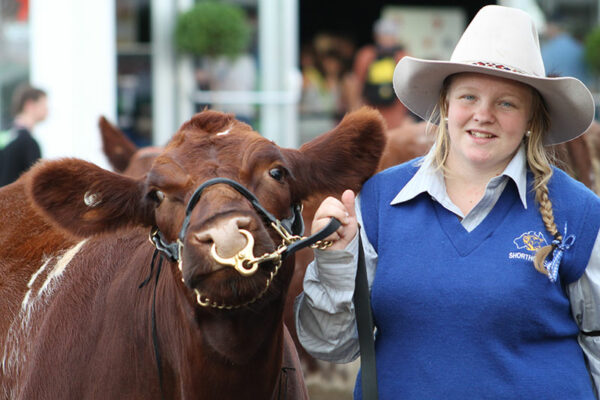Buying Shorthorn Bulls
By Drs. Randie Culbertson, ASA and IGS Lead Geneticist and Jackie Atkins, IGS Director of Science and Education.
Daughters sired by IGS bulls in the top 25 percent for Stayability were over twice as likely to remain in the herd as six-year-old cows and averaged almost two more calves in their lifetime compared to daughters sired by bulls in the bottom 25 percent for Stayability EPDs.
The financial success of cow-calf operations depend on a cow’s ability to remain in the herd long enough to recoup the cost of heifer development and cow maintenance. In order to achieve this, a heifer needs to calve as a 2-year-old and produce a calf each subsequent year. Stayability EPD was developed to predict this reproductive success (or failure) and is defined as a cow’s ability to remain in the herd to a specific endpoint, with the assumption that open cows are culled. The typical endpoint is defined at six years of age. Stayability has an economic influence on a cow herd through female reproduction, increased calves per cow, and increased calf performance given mature cows on average wean heavier calves.
As with most reproductive traits, the heritability of Stayability is low (less than 0.20) indicating a large non-genetic influence on Stayability. These non-genetic influences can range from farm conditions to farm management and are not inherited by future progeny. On the flip side, if you provide the optimal environment for your herd but lack the genetics for cow longevity, you will still find yourself with cows falling out of the herd prematurely. Although a low heritability for Stayability illustrates the importance and significance of management, it also tells us that there is an underlying genetic aspect to a cow’s ability to remain in the herd. Furthermore, since cow longevity is largely determined by the environment, making genetic selections to improve longevity is far more accurate with a Stayability EPD compared to a phenotype heavily influenced by the environment. In the context of genetic improvement, ignoring Stayability EPDs will slow or reverse the genetic progress for this highly relevant trait.
Since its development, the stayability EPD is currently being published by multiple breed associations, but how reliable is this EPD for predicting cow longevity? To examine this question, over 140,000 daughters from high-accuracy bulls for Stayability from the IGS database were analysed. These sires were ranked by their Stayability EPD and divided into four percentile groups or quartiles; 1-25 (best), 26-50, 51-74, 75-99 (bottom) percentile. Within each quartile, the percentage of daughters remaining in the herd to six years-of-age and the average number of calves from daughters in their lifetime was compared.
As you can see in the graph, as Stayability EPD increased, the percentage of daughters reaching the age of six also increased. When comparing the lowest quartile to the highest quartile, the percentage of daughters remaining in the herd to age six more than doubled.
Only 22% of the daughters reached the age of six for the lowest quartile compared to 49% of daughters for sires in the highest quartile.
But how does this translate to calves on the ground? The second graph illustrates the average number of calves from daughters of sires within each Stayability EPD quartile group. There is a clear increase in the average number of calves per cow as we move towards the top percentile. Daughters from sires in the top Stayability quartile averaged nearly two more calves in their lifetime compared to daughters out of sires in the lowest Stayability quartile.
Female longevity is one of the most economically impactful traits of commercial cow-calf operations. When choosing genetics for replacement females, emphasising stayability will optimise the genetic potential for longevity in the herd.





